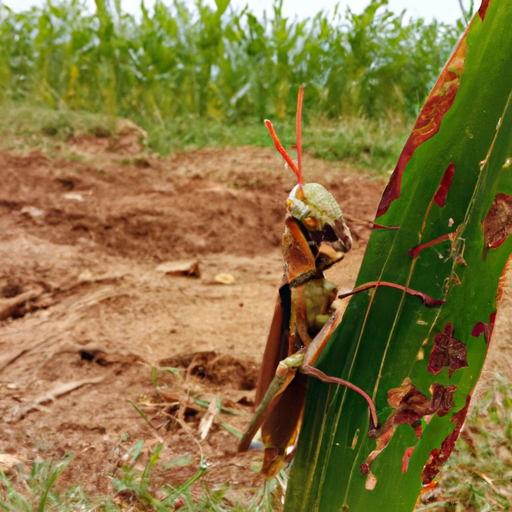 Introduction:
Introduction:
The diversity of life on our planet is truly awe-inspiring, with countless species displaying remarkable adaptations that allow them to flourish in a wide range of environments. From the freezing Arctic tundra to the scorching deserts, and from the depths of the oceans to the highest mountain peaks, animals have evolved an array of unique characteristics and behaviors that enable them to survive and thrive. In this comprehensive article, we will delve into the intricacies of how animals adapt to their environment, exploring the various mechanisms and fascinating examples of adaptation observed across different taxa.
1. What is Animal Adaptation?
Adaptation refers to the process by which organisms develop traits or behaviors that enhance their survival and reproductive success within a specific environment. These adaptations can be structural, physiological, or behavioral, and are often the result of natural selection acting on heritable genetic variations over long periods of time.
2. Structural Adaptations:
Structural adaptations encompass physical characteristics that help animals survive in their environment. Examples include:
2.1. Camouflage:
Many animals have evolved color patterns, body shapes, or other physical features that allow them to blend into their surroundings, providing them with a vital defense mechanism against predators or enabling them to ambush prey.
2.2. Mimicry:
Certain animals have developed the ability to mimic the appearance or behavior of other species, often for survival advantages such as protection from predators or gaining access to resources.
2.3. Appendages and Body Structures:
Animals have evolved specialized appendages, such as beaks, claws, or wings, enabling them to obtain food, escape predators, or efficiently navigate their environment.
3. Physiological Adaptations:
Physiological adaptations involve internal mechanisms and processes that enable animals to survive in extreme conditions. Key examples include:
3.1. Thermoregulation:
Animals have developed diverse ways to regulate body temperature, allowing them to thrive in both hot and cold environments. Strategies range from insulation (e.g., fur, blubber) to evaporative cooling (e.g., sweating, panting) or hibernation.
3.2. Metabolic Adaptations:
Certain animals have evolved physiological mechanisms that enable them to survive in environments with limited food resources. These adaptations include reduced metabolic rates, energy storage strategies, or the ability to enter extended periods of torpor or dormancy.
3.3. Detoxification:
Animals living in toxic environments, such as those near volcanic vents or contaminated habitats, have evolved specialized enzymes or organs to detoxify harmful substances, ensuring their survival.
4. Behavioral Adaptations:
Behavioral adaptations encompass the actions and responses exhibited by animals in response to their environment. Examples include:
4.1. Migration:
Many species undertake long-distance migrations to find suitable breeding grounds, escape adverse conditions, or locate abundant food sources. This behavioral adaptation ensures their survival across changing seasons.
4.2. Foraging Strategies:
Animals have developed a variety of foraging techniques, such as hoarding, scavenging, or cooperative hunting, to optimize their chances of obtaining food resources in their respective habitats.
4.3. Communication:
Animals communicate through various means, including vocalizations, visual displays, or chemical signals. These adaptations facilitate social interactions, mating rituals, and warning signals among individuals within a population.
5. Examples of Animal Adaptations:
Numerous captivating examples of animal adaptations exist across the globe:
5.1. Polar Bear (Ursus maritimus):
Evolved for life in the Arctic, polar bears have a white coat to blend with the snow, a thick layer of fat for insulation, and large paws for efficient movement across the ice.
5.2. Chameleon (Family: Chamaeleonidae):
Chameleons possess specialized cells in their skin called chromatophores, allowing them to change color for camouflage, thermoregulation, or communication purposes.
5.3. Kangaroo Rat (Genus: Dipodomys):
These desert-dwelling rodents have highly efficient kidneys, allowing them to extract water from their food and produce highly concentrated urine, minimizing water loss.
6. The Role of Evolutionary Pressures:
The process of adaptation is driven by various evolutionary pressures, including predation, competition, climate change, and resource availability. These pressures exert selective forces that shape the genetic makeup of populations over time.
Conclusion:
The marvels of animal adaptations are a testament to the incredible ingenuity and resilience of life on Earth. From the microscopic to the majestic, animals have evolved an astonishing array of structural, physiological, and behavioral adaptations that enable them to survive and flourish in some of the harshest environments. Understanding these adaptations not only enriches our knowledge of the natural world but also highlights the delicate balance that exists between organisms and their environment, underscoring the importance of conservation efforts to preserve these remarkable adaptations for future generations.
